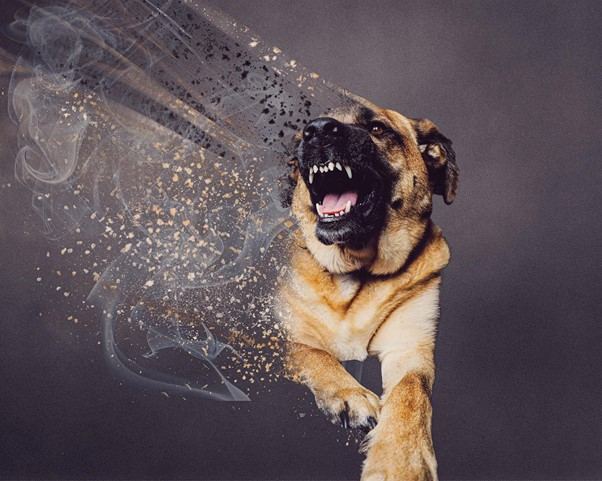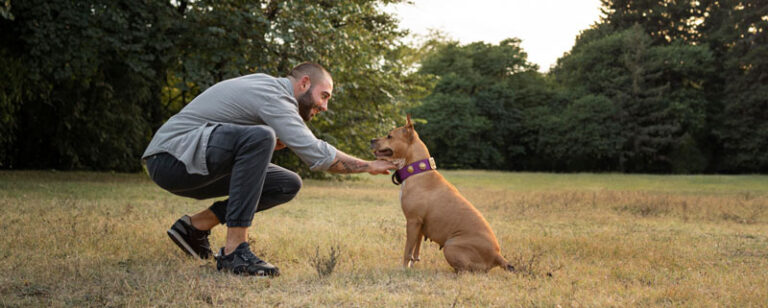Common Skin Problems in Dogs
- Last updated on January 17, 2023
- By: Caroline Stowe
If you are a pet parent, then you know how important it is to pay attention to your dog’s body language. You know that your pup relies on you to take care of them. That includes watching out for any signs of skin problems or diseases.
But have you ever given any thought to what their skin may be trying to tell you? That’s right — just like humans, dogs can experience various skin problems that can affect their overall health and quality of life.
As a pet parent, it is essential to be aware of the common skin problems dogs can suffer from for both medical and cosmetic reasons. Let’s dive into the world of canine dermatology and review some common skin problems in dogs.
Diseases Associated With Poor Skin Conditions
When a dog is suffering from poor skin and fur conditions, it may be dealing with more than just an aesthetically displeasing issue; this could be indicative of a larger underlying health problem.
Common diseases that your pup may have when having a poor skin and fur condition include allergies, parasites, fungal infections, bacterial infections, autoimmune disorders.
Understanding Your Dog's Skin And Coat

We all know that our dogs can’t talk, but their skin can tell us a lot about their health. If you’re a pet owner, it is important to be aware of the most common skin problems your pup may face and how they can be treated.
It’s no secret that a dog’s skin and coat play an important role in their overall health and well-being; however, understanding the different layers of each can help us identify issues or warning signs sooner.
Dog Skin Layers
The topmost layer is known as the stratum corneum – its job is to protect against bacteria, mosses, fungi, and allergens.
Just below this is another layer filled with glandular cells responsible for producing natural oils that aid in keeping the skin hydrated while defending it against environmental pollutants.

Deeper still lies yet another layer consisting of blood vessels and nerve centers which mostly influence how well fur grows.
All these layers are essential to dog health and need to be cared for with regular grooming – failure to do so can lead to various skin diseases or ailments due to poor skin conditions.
Different Types of Skin Problems in Dogs
The two main layers of a dog’s skin are the epidermis (the outer layer) and the dermis (the inner layer). Let us discuss the different diseases associated with each layer.
Itching and Scratching
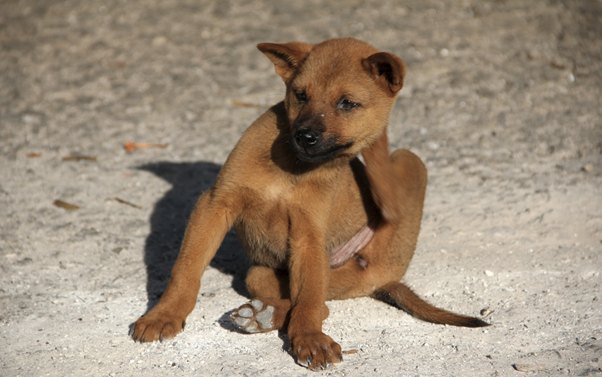
One of the most common skin problems seen in dogs is excessive itching and scratching. This may be caused by dry skin, allergies, fleas, or other parasites.
It’s important to determine the cause before treating the symptoms. A vet visit may be necessary for diagnosis and treatment options.
Dry Skin
Dry skin in dogs is often caused by poor nutrition or a lack of essential fatty acids in their diet.

Symptoms include dandruff-like flakes on the coat, scaling on the nose and paws, bald patches, or an overall dull appearance to the coat due to flaking off of dead cells.
Excessive scratching, hair loss, redness, or irritation. include dander, flakes, and itching are also some other signs of dry skin
To reduce the symptoms of dry skin, make sure your pup has access to plenty of clean drinking water and feed them an appropriate diet with healthy fats and fatty acids – preferably choosing dog food designed for dry itchy skin.
Treatments include adding omega 3 fatty acid supplements to the diet as well as daily brushing with a soft brush which will help remove any dead flakes from the coat while stimulating oil production in the skin underneath for added moisture retention.
Allergies
Dogs can have food allergies as well as environmental allergies. Allergies are one of the most common causes of skin issues in dogs. Allergic reactions can be caused by food, pollen, dust mites, flea bites, and even certain medications.
Symptoms include itching, redness, bumps, or patches of fur loss. Other symptoms include rashes or hives on the face, belly, or feet as well as sneezing or coughing if airborne allergens are involved.
Allergy testing may be necessary to determine what triggers your pet’s reactions so that proper treatment can begin right away.
It is best to visit a vet if your pooch is showing any signs of allergies as they may need medication or special diet for dog allergies to treat the condition.
Hot Spots
Hot spots are inflamed areas of skin that are usually caused by excessive licking or chewing of one area. They are often red and raw with hair loss around the area.
Treatment includes antibiotics, medicated shampoos, cold compresses, and possibly anti-inflammatory medications from your vet.
To prevent hot spots from occurring, make sure your dog’s coat is kept clean and free from mats or tangles which can cause irritation.
Fleas
Fleas are pesky parasites that feed off your dog’s blood and can cause severe itching and discomfort for your pup.
Fleas are most commonly seen around the neck area and back legs but can spread to other parts of their body quickly if left untreated.
To prevent fleas from taking over your pup’s skin make sure to keep up with regular flea treatment like baths with flea shampoo or topical treatments like spot-on applications or flea pills that kill adult fleas before they lay eggs on your dog’s fur.
Watch the video below to learn more about fleas and flea allergies in dogs.
Mange
Mange is an infection caused by mites that burrow under the skin and cause extreme irritation and itching for dogs.
Symptoms include hair loss, scabbing, redness, and inflammation which can be extremely uncomfortable for your pup if not treated properly.
Treatment includes medicated dog shampoo, dips, or injections given by a veterinarian which will help reduce the symptoms associated with mange infections.
Ringworm
Ringworm is a fungal infection that often manifests itself as bald patches around the head and neck area with scaly or crusty patches around it.
The fungus spreads quickly so it is important for pet owners not only to treat the affected area but also to keep other pets away from the infected one until fully healed (often times this requires multiple vet visits).
To prevent ringworm from spreading further, ensure all bedding materials used by the infected pet are washed thoroughly before use by other animals in the household.
Pyoderma
Pyoderma is a bacterial infection of the skin that causes pus-filled lesions on the surface of the skin that often smell bad.
This condition must be treated very quickly with antibiotics prescribed by your veterinarian to prevent further infection spread throughout your pet’s body via its bloodstream system which can potentially lead to organ damage or even death if left untreated for too long!
What Can Lumps & Bumps on Your Dog's Skin Tell You?
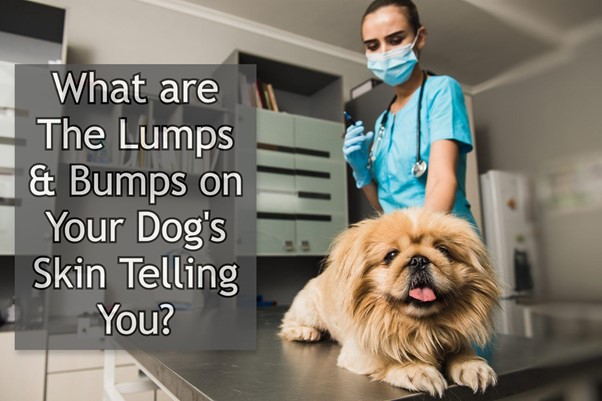
There are various types of lumps, bumps, and growths that may occur on a dog’s skin. The most common types of growths that may appear on your dog are lipomas, cysts, lipomas, sebaceous adenomas, and histiocytomas.
Each type offers different symptoms and requires different treatments depending on the severity. Therefore, it is important to seek professional advice from your veterinarian if you notice any strange lumps or bumps on your dog’s skin.
Your vet will conduct an examination and take samples if necessary to identify the type of lump or bump that has appeared on your pet’s skin.
Types of Lumps & Bumps on Dogs
Lipomas
These are soft fatty tumors found just beneath the skin. They are often benign and tend to occur in middle-aged or older dogs.
However, it is important to have them checked by a veterinarian as they can sometimes become malignant.
These types of lumps tend to move when touched and can grow over time if left untreated.
Cysts
Cysts are sac-like structures filled with fluid or semi-solid material. They may appear anywhere on your pet’s body but commonly occur around the eyes, face, or groin area.
Cysts vary in size and often don’t cause any problems for your pet unless they become infected or irritated due to trauma or allergies.
Sebaceous adenomas
These are small round tumors that form from the sebaceous glands located in the skin of your dog’s coat.
These glands secrete oils that help keep the fur healthy and moisturized; however, when these glands become overactive or tumor-like growths form, they can cause irritation or infection if not monitored closely.
Histiocytomas
Histiocytomas are benign tumors that typically form in younger dogs (under four years old). These bumps usually appear as small red nodules on their skin and may range from 1-2 cm in diameter.
It is important to have any strange lump examined by a veterinarian for proper diagnosis as some histiocytomas have been known to transform into more aggressive forms over time if left untreated.
Abscess
An abscess in dogs is a collection of pus that forms underneath the skin. This can be caused by an infection, trauma, or foreign objects such as splinters, grass awns, or insect bites.
It is usually accompanied by redness and swelling and may cause intense pain for the dog.
Papillomas
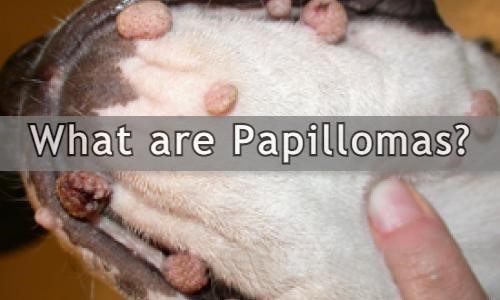
Papillomas are small, wart-like bumps that may appear on a dog’s skin and mucous membranes, such as in the mouth.
These growths consist of multiple s layers of fibrovascular connective tissue, and can be found anywhere on the body but are typically seen on the face, eyelids, and feet.
Mast Cell Tumors
Mast cell tumors are a type of cancerous growth that can develop on the skin of dogs. These tumors are comprised of mast cells, a type of white blood cell found in the body’s immune system.
Mast cells produce chemicals such as histamine, heparin, and serotonin that aid in the body’s inflammatory response
Don’t panic if you see a lump or bump – not all lumps or bumps are serious! For example, cysts are common in older dogs and often appear as small bumps under their skin which may contain liquid or semi-solid material.
They are usually harmless although sometimes they may need to be removed depending on their size and location. Similarly, lipomas are benign fatty tumors that usually appear as soft masses beneath the skin’s surface.
Again they may require removal depending on their size but they generally pose no health risk to your pet otherwise.
Treatments for Lumps & Bumps
If a veterinarian identifies a lump or bump as cancerous then treatment options such as radiation therapy may be recommended in order to eliminate the tumor completely.
In some cases surgery may also be advised for removal of the affected area if it poses any risk to your dog’s health – this will depend on its location and size however so it is important that a professional opinion is sought first before making any decisions about treatment plans for your pet’s condition.
Other than this there are various other treatments available depending on the type of growth identified including medications (e.g antibiotics), and cryotherapy (freezing off).
Prevention
Keeping an eye out for common skin problems in dogs will help ensure that you catch any issues early on before they become more serious conditions that could lead to major health complications down the road!
Regular grooming sessions with a professional pet groomer will also help keep an eye out for any abnormal changes in fur texture or color that could indicate something more serious going on beneath the surface!
Don’t forget those regular vet checkups too – prevention is always better than cure! Taking good care of your pup’s coat goes beyond just looks – it’s also about keeping them safe and healthy!
Learn more about lumps and bumps by clicking the video below as Dr. Danielle Spencer explains what bumps and lumps on your dog could mean.
Conclusion
Skin issues in dogs can vary from minor irritations to serious infections so it is important to pay attention to any changes in your pup’s appearance or behavior that could indicate a problem with their skin health.
It’s natural for dog owners who want to help relieve any discomfort their furry friends may be feeling due to a skin problem but attempting home remedies without proper diagnosis could lead to more harm than good for your pup!
Always consult your veterinarian if you suspect something more serious is going on with your four-legged friend so they can get back on their paws as soon as possible!
Knowing what signs to look out for and taking care of their skin health will help ensure your pup stays happy and healthy!
-
Author: Caroline Stowe
- Updated on January 17, 2023
Disclaimer: This article doesn’t intend to replace professional veterinary advice, nor should it be used as a substitute for veterinary services, diagnosis, or treatment. The content on this website, including information and opinions expressed herein, are intended for general informational purposes only. In case you have concerns or questions regarding your dog’s health and diet requirements, please consult your veterinarian before doing anything that might affect it.
DogPetGuide.com and the writer are not responsible or liable for any damage, liability, costs, or claims arising from any possible consequences of the reader’s action after reading this article.



